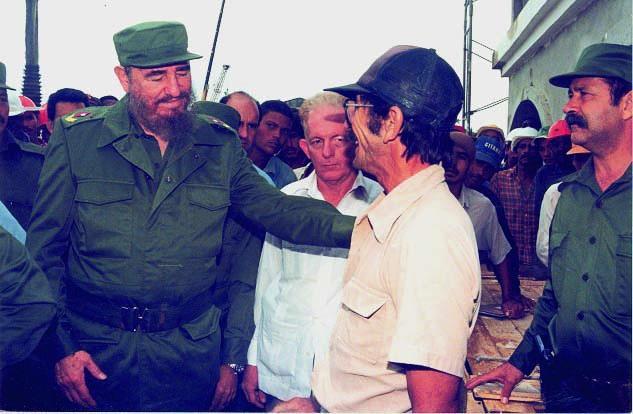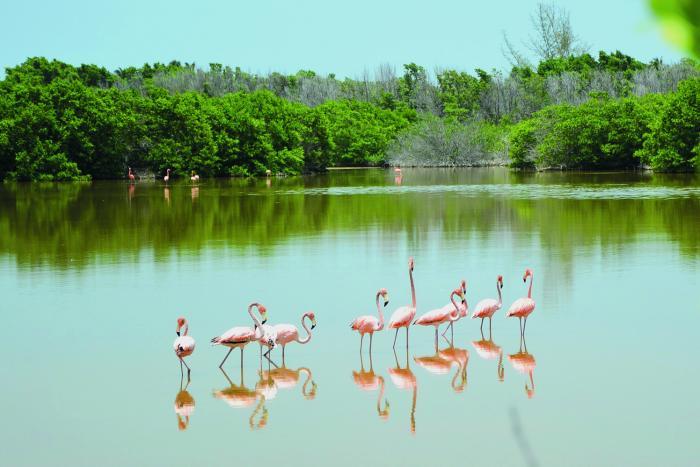
Under the relentless sun of the tropics, an area of rock and earth stubbornly usurps the sea. It is not a natural phenomenon, but the indelible imprint of a bold vision of Commander-in-Chief Fidel Castro Ruz.
What some then called madness or whim would be revealed as a great strategy for tourism development, transforming a forgotten, inhospitable and beautiful region into a sun and beach destination, a world reference for its beauty.
Before the causeways, they were almost pristine territories, accessible only by sea or air, keys Guillermo, Coco, Romano and Cayo Cruz, to the north of the provinces of Ciego de Ávila and Camagüey; and Santa María, Las Brujas and Ensenachos, in Villa Clara.
Its beaches of white sands like baby powder, waters in shades of intense blue and an exceptional marine biodiversity remained beyond the reach of mass tourism and, therefore, of economic development. They were hidden gems, known only to local fishermen, coalmen and the occasional human with an adventurous soul.
Fidel's advanced and far-sighted vision of uniting the seemingly unattainable glimpsed the dormant potential. "We must take the road to the key." "Here you have to throw stones without looking forward," were the unsuspected phrases, the slogan, for the beginning of the titanic and challenging project: throw stones into the sea and raise dozens of kilometers of embankment on the seabed, in shallow, but dangerous waters.
Thousands of workers were thrown into the adventure, in very harsh conditions. It was not just a road; it was a bridge to the region's economic future.
The construction was epic. It involved moving millions of cubic meters of rock, designing water passages so as not to strangle marine currents, and overcoming technical and financial skepticism. Every mile advanced over the sea was a battle won against isolation. The boulders were not just a physical connection that challenged the sea; they symbolized the determination to develop the country, even in times of extreme difficulty.
On July 26, 1988, 37 years ago, in the central act for the Day of National Rebellion, in the province of Santiago de Cuba, Commander-in-Chief communicated to Cubans and the world: "(...) today we received the news, sent by the builders, that (...) as a tribute to July 26, they had tied the mainland with Cayo Coco."
That news marked a turning point. Overnight, the pristine beaches became accessible. Massive investments flowed: first-rate all-inclusive resorts were build, greatly respecting the natural environment.
The construction of the Causeway to Coco Key was the first blow. An engineering feat of 22 kilometers, 17 of them over the sea, aroused disbelief and then admiration. It wasn't just a road; it was a threshold. Suddenly, the heavenly beaches of Coco and Guillermo were only 45 minutes from the city of Morón.
And as Fidel accustomed us to anticipate the events in front of the wall that represented the most complex obstacles, a virtue that he knew how to cultivate in his life as a visionary forger, since the time of Birán, where he was born, he continued with the thought of building roads on the sea, and then the Caibarién Santa María Key’s causeway was born (opened in 1999), a 48 km colossus that winds over the blue waters north of Villa Clara.
In the era of causeways in Cuba, it is impossible not to mention the leadership of Evelio Capote Castillo and Orlando Rodríguez Pérez (both deceased); the first, at the head of the contingent Roberto Rodríguez -El Vaquerito-; the second, in command of the Campaign of Las Villas.
These two men, along with thousands of workers, faced extreme conditions: inclement sun, isolation and the technical challenge represented by such ambitious works. His commitment turned a bold dream into a tangible and lasting result, demonstrating Cuba's capacity to undertake colossal projects with its own resources.
A DISCOVERY FOR CUBA AND THE WORLD
In Santa María Key, the door was opened to ten kilometers of pristine beaches, of very white sand and of biogenic origin; and in Coco Key, 22 kilometers from spas of the same origin, with transparent and crystalline waters, among which Playa Larga, Playa de los Flamencos, Playa Pilar and Playa El Pino stand out, the latter in Paredón Grande.
This is joined by more than 11,000 rooms in operation and the prospect of reaching 22,000. In the destination Jardines del Rey, with 27 hotels, were received, until last June, some 148 000 foreign visitors and more than 48 000 from the domestic market, that enjoy a product of sun and beach, guarantee of the sustainability of norms as not to allow high levels of the constructions, keep the distance from the coast, not build on top of the dunes, or carry out activities that damage the flora or fauna.
These are also priorities of Villa Clara northern keys, a place where the three keys include about 13,000 rooms distributed in 22 hotels, with buildings that respect the environment. The place also has a marina, dolphinarium and other attractions that give added value to the stay of travelers.
These keys, together with the fishing village of Caibarién, have been declared a Biosphere Reserve, as an example of harmonious combination of nature and civil engineering, internationally recognized.
Both tourist centers are declared as responsible destinations that respect sustainable practices, supported, in turn, by an agreement with the United Nations Development Program (UNDP) and the Ministry of Science, Technology and Environment (Citma, for its Spanish acronym), called Sustainable Tourism Project, whose first strategic line is aimed at maintaining and weighing the biodiversity and sustainability of the destination.
The results are evident today: Coco and Santa María Keys are tourist gems recognized worldwide, with beaches of turquoise waters and preserved ecosystems; enclaves that generate employment, foreign exchange, and show the potential of Cuban tourism.
This project symbolizes, more than engineering, testimony of collective perseverance. Fidel knew how to see the potential where others only saw marsh; Capote and Orlando embodied the will to make it possible. The causeways are not just stone and earth, or a ribbon over the sea. They are foundations of sovereignty, development and national pride; a dream that could only occur to those who did not believe in impossible, and that also taught us not to believe in them.
















